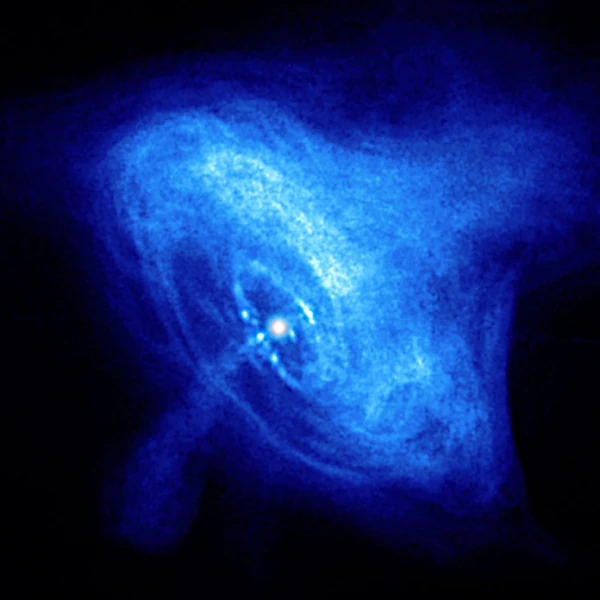
Neutron stars are extreme astrophysical objects resulting from the gravitational collapse of massive stars after a supernova. At this stage, gravitational pressure far exceeds the capacity of electromagnetic forces that keep atoms intact. Thus, classical atomic matter disappears to make way for a state of matter dominated by degenerate neutrons.
The structure of a neutron star can be approximated by several layers: a thin ionized plasma atmosphere, a crust consisting of highly compressed atomic nuclei, and a core where the matter is essentially composed of degenerate neutrons.
The typical density in the core is on the order of \(10^{17}\) kg/m\(^3\), roughly equivalent to the mass of the Sun compressed into a radius of about ten kilometers.
This density far exceeds the classical nuclear density (\(\rho_{\mathrm{nuclear}} \approx 2.8 \times 10^{17}\) kg/m\(^3\)) and implies neutron degeneracy. The degeneracy pressure, resulting from the Pauli exclusion principle, prevents total collapse into a black hole.
Under these extreme conditions, electrons are captured by protons to form neutrons via the reverse beta decay reaction: \( p + e^- \rightarrow n + \nu_e \)
Atoms no longer exist because there are no more electron shells around the nuclei: the matter is a super-dense neutron fluid. The atomic structure thus completely disappears, and the matter reaches a state where the distinction between individual particles becomes blurred.
| Object | Typical density (kg/m3) | Physical state | Comments |
|---|---|---|---|
| Earth (average) | ~5.5 × 103 | Solid / Liquid | Classical atomic matter |
| Sun-like star | ~1.4 × 103 | Ionized gas (plasma) | Mainly hydrogen and helium, very high temperature |
| Free nucleons in atomic nucleus | ~2.8 × 1017 | Dense nuclear | Strongly bound environment by strong nuclear interaction |
| Neutron star (core) | ~1 to 3 × 1017 | Degenerate neutron fluid | Total disappearance of atoms, free neutrons |
| Black hole (horizon) | Variable / extreme | Singularity (according to classical theory) | Ultimate gravitational collapse |
Source: Lattimer & Prakash (2007), Physics Reports.
Neutron stars represent an extreme state of matter where the classical physics of atoms no longer applies. The competition between gravity and neutron degeneracy quantum pressure shapes these compact and fascinating objects, gateways to complex and still widely studied astrophysical phenomena. The disappearance of atoms in favor of a neutron fluid perfectly illustrates the diversity of states of matter in the Universe.